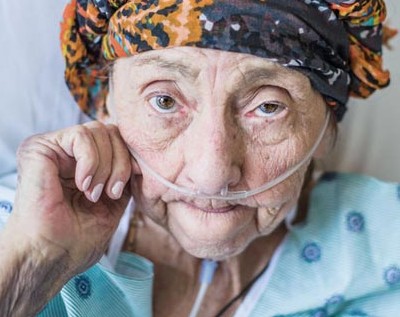Sepsis Linked to High Rates of Mortality, Rehospitalization Following Discharge
By Dr. Joseph Shega, MD, Chief Medical Officer, VITAS Healthcare
Hospitalized adults diagnosed with sepsis had higher rates of post-discharge mortality and readmission compared with non-sepsis patients, a population-based cohort study has found, indicating “the need for careful follow-up of severe sepsis survivors,” according to the authors of a report published in Critical Care Medicine.
“The results of this study highlight the high burden of sepsis,” the authors write. “We found that severe sepsis is associated with higher long-term mortality compared to non-sepsis hospital controls, even considering only the post-discharge period in hospital survivors.”
Investigators analyzed administrative health data collected by an independent research institute on 196,922 adult (aged ≥ 18 years) sepsis patients hospitalized in Ontario, Canada, between 2012 and 2016, with a median follow-up of 2.0 years (mean, 2.1 years; range, 1 day to 5 years).
Results indicate the need for careful follow-up of severe sepsis survivors.
The sepsis patients were stratified into groups of either severe sepsis (sepsis or infection with organ dysfunction or septic shock, 32.6%; n = 64,204) or non-severe sepsis (sepsis or infection without organ dysfunction, 67.4%; n = 132,718) and were propensity matched to non-sepsis controls.
During the 4-year period, 14.5% of patients admitted to hospitals in Ontario—which has a population of more than 13 million—were diagnosed with sepsis or infection, and 4.9% had severe sepsis. Sepsis patients overall had higher death rates during follow-up than patients in the non-sepsis control group (severe sepsis: 54% vs 36.2%; non-severe sepsis: 40.1% vs 31.7%).
Mortality
- Overall, patients with severe sepsis had higher relative mortality rates compared with controls (22.3% vs 12% 0-30 days from admission; 17.4% vs 10.2% 30-183 days from admission; 8.5% vs 5.5% 6-12 months from admission).
- Severe sepsis patients had the highest relative mortality rates at 0-30 days following discharge (22.3%). Cumulative mortality rates rose to 39.7% at 6 months; 48.2% at 1 year.
- While patients with non-severe sepsis had lower mortality rates than controls at 0-30 days post-hospitalization (8.3% vs 9.9%), their relative rates were higher at 30-183 days (11.1% vs 8.7% [cumulative 19.4% vs 18.6%]) and 6-12 months (6.8% vs 4.6% [cumulative 26.2% vs 23.3%]).
Readmission
- Sepsis patients overall had higher rehospitalization rates compared with controls (severe: 62.2% vs 48.4%; non-severe: 60.1% vs 47.1%).
- Higher relative rates of rehospitalization were found among both severe (HR, 1.53; 95% CI, 1.50-1.55) and non-severe (HR, 1.41; 95% CI, 1.40-1.43) sepsis patients.
- At both 30-day and one-year follow-up, severe sepsis patients had higher relative rates of rehospitalization (14.4% vs 9.4% at 30 days; 45.7% vs 32.2% at 1 year).
- Non-severe sepsis patients also had higher relative rates of rehospitalization at 30-day follow-up (12.1% vs 9.1%) and one-year follow-up (41.5% vs 30.4%).
The research team concludes, “Severe sepsis was associated with substantially higher long-term risk of death, rehospitalization, and healthcare costs, highlighting the need for effective post-discharge care for sepsis survivors.”
More than one-third of severe cases die within 6 months of initial admission, making hospice an ideal option for sepsis patients seeking symptom management at home. Hospice offers both patient and family the support of an interdisciplinary team capable of administering complex modalities in any setting, while also reducing hospitals’ resource burdens related to readmissions and length of stay.
Source: Farrah, K., McIntyre, L., & Doig, C.J. (2021). Sepsis-associated mortality, resource use, and healthcare costs: A propensity-matched cohort study. Critical Care Medicine, February 1, 2021; 49(2):215-227; DOI: 10.1097/CCM.0000000000004777.
Clinicians: Sign up for VITAS emails
Subscribe for end-of-life care news and free CE webinars.
Sign Up

